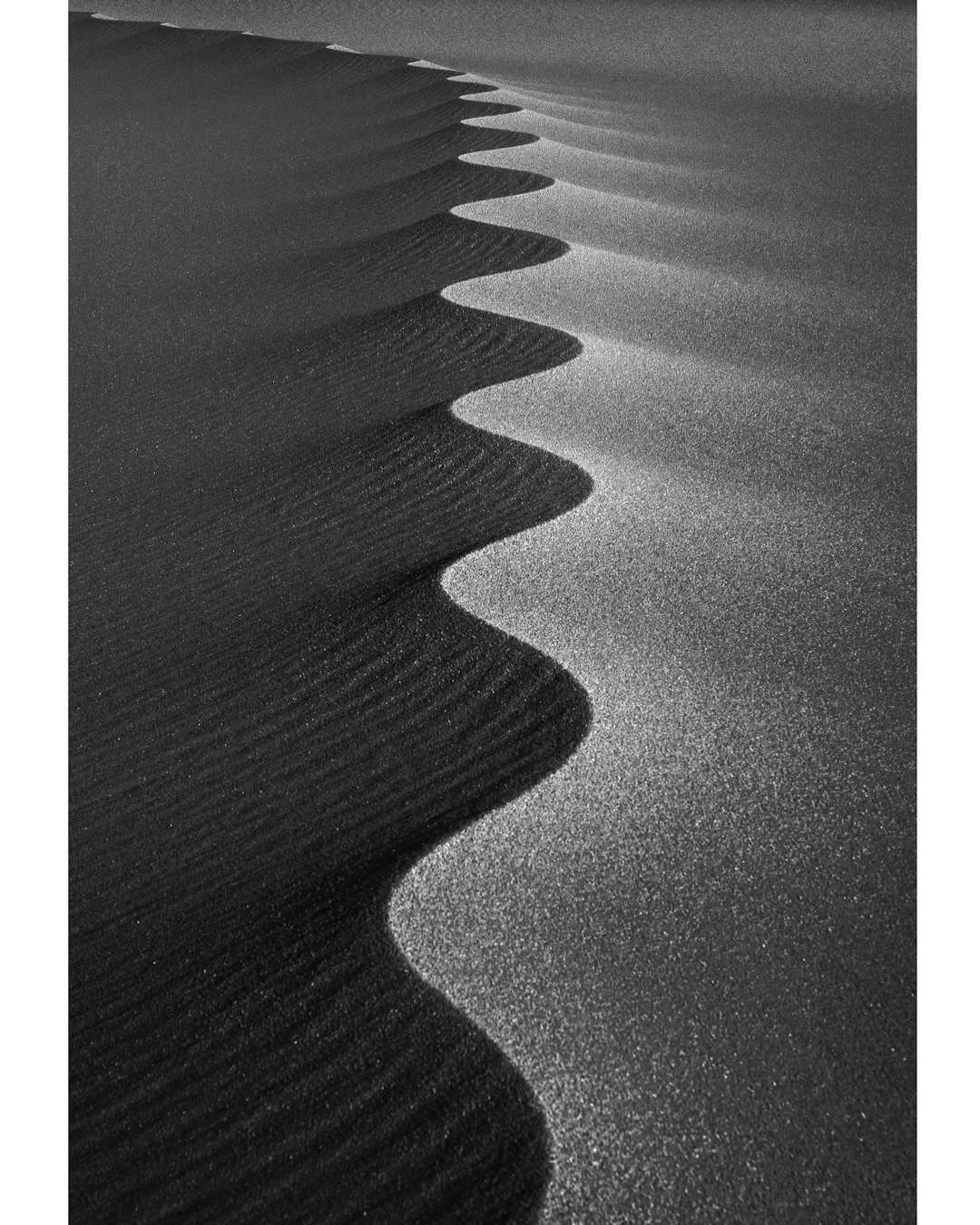Biorhythms, by Nik Barte (2011).
Last week, I opted not to write a photo of the week blog, due to the frankly boring images I came across. Scrolling through Instagram, neo-romantic desaturated photographs of people in yellow raincoats in Iceland or foggy European vistas cluttered my feed. I kept scrolling. I found many fantastic wildlife photographs, however, none really compared to Jan Wegener's heron two weeks ago, so I felt it would be a disservice to select one of those. The most inspiring photographs I found were a few heavily photoshopped, ethereal-looking images of reindeer and overturned cars or magenta deserts. While the images were beautiful and striking, I hesitated to select them as photograph of the week, as the artists had (with great talent) turned their images into more of a digital painting than a realistic image. This week, I feared I'd have a same problem. Fortunately, Nik Barte's Biorhythms inspired me, not because of its originality in concept, but rather the sophistication in execution.
Edgeline, Mesquite Flats Sand Dunes, 2017. (DBM Photography).
Sand dunes lend themselves terrifically to try to capture abstract, high-contrast, images. Early in the morning or late in the evening, the sun casts long, dark shadows on the dunes. The sharp lines of the dunes form crisp, clear shadows, contrasting the hot, bright sand reflecting the sun. With no trees or other plant life to impede (it's a desert after all), sand dunes create shadows in their purest form. This is what draws photographers to sand dunes. There are countless photographs by big name and no-name photographer alike of lovely black and white sand dunes. Indeed, I myself set out at 5 AM one morning to capture a grand vista of Mesquite Flat Sand Dunes, defined by long black shadows (see resulting Edgeline). However, whereas I, and many others, sought to capture a powerful, tour-de-force photograph of shadows and sand dunes, Nik Barte has succeeded in keeping his photograph simple. The fact of the matter is that when photographing sand dunes the name of the game is minimalism, and Barte excelled at capturing a refined, elegant version of the dunes.
In Biorhythms, the only thing in the photograph is one perfectly-shaped sinusoidal dune ridge. Its ridge defines the shadows which compromise half the image, and nothing more. There's no distracting secondary dune in the background, there's no stray foot print in the bottom corner, or any other outside element. Nik managed to completely isolate this singular line. The result is astounding! I know with my own photograph I spent a lot of time (and wasted a lot of gorgeous light) trying to frame my dune so as to minimize distraction in the background. Nonetheless, I had to settle to show the mountains in the background. If anyone asks though, that's intentional. Likewise, in my head I had pictured a perfect untouched dune, but without trekking for several hours before sunrise through Death Valley, I was unable to find one without footprints, so I chose to incorporate those footprints as the subject. Nik, on the other hand, has accomplished what I sought to do, completely isolate an undisturbed dune. Nik went further, however, in that he seems to have located the most perfect looking squiggly line I've ever seen. I doubt a computer could graph a line as elegantly.
Due to the fact that Nik simplified his image to lowest number of structural elements necessary to represent a dune, I couldn't help but draw comparisons between his photographs and the Bauhaus. I'd be shocked if any photo (at least one that I can find on Instagram) better encapsulates Klee's famous quote:
Nature is garrulous to the point of confusion, let the artist be truly taciturn.
Sand dunes are incredibly chaotic; made up of trillions of tiny crystals, sand dunes are ever changing, often disturbed by wildlife or other people. Yet Nik has filtered out all the noise, he's used his perspective to simply nature's chaos into the most basic element of composition, a line.
Blitzgefahr, Paul Klee (1931).
In fact, Nik's use of a single (or maybe just a few) lines to depict a sand dune reminded me of Klee's Blitzgefahr. Klee's lines are a little more jagged than Nik's beautiful curve, but the principal is similar. The major difference, however, is that Klee could paint whatever he wanted onto his canvas. Nik is limited to documenting what he see via the camera, hence my admiration for Nik Barte' Biorhythms.
Further information:
Biorhythms (2011), was created as part of the project #DesARTification, which sought to develop a dialogue about desertification and climate change, through the universality of art. Nik created Biorhythms through various expeditions into the vast Sahara desert.
For those interested in prints of Biorhythms or others in the #DesARTification project, Nik emphasized:
The operas that are composing DesARTification project are printed upon a special fine art paper for archival. These selected operas are available exclusively in limited edition and framed.
You can find more of Nik's work at https://nik-barte.culturalspot.org/browse/ or by searching #DesARTification on Instagram.
if you're interested in learning more about people, companies, and the UN are doing regarding desertification, Nik recommends visiting the UNCCD at http://www2.unccd.int/


